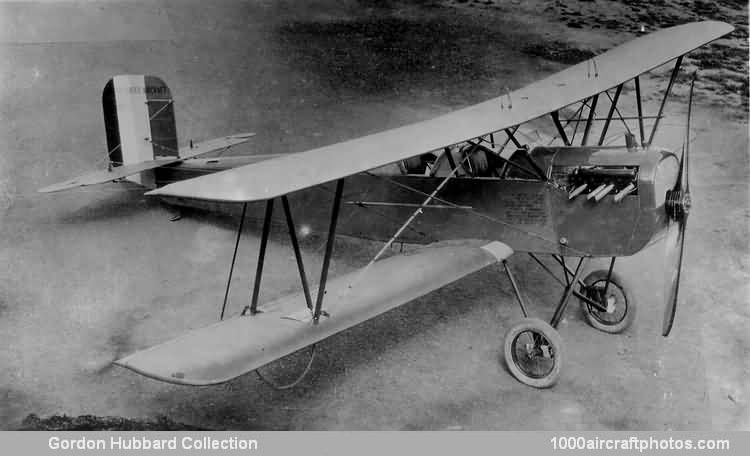12/31/2012. Remarks by Johan Visschedijk: "Consolidated founder Reuben Fleet worked closely with the USAAS to improve the Dayton-Wright TW-3 and thus was in a competitive position when a contest for a new primary trainer was announced in 1924. Fleet had earlier modified a TW-3 into the Camel, an unofficial name for the tandem-seat version. The other major features of the TW-3, the 180 hp Wright E engine, spruce-spar wings – the upper center section containing two 20 gal (76 l) fuel tanks – and steel-tube fuselage, tail group, interplane struts, and split-axle landing gear (fitted with DH-4 wheels), were retained.
Consolidated's prototype (reportedly with s/n 23-1253), and unofficially designated TW-8, achieved success in the USAAS competition held at Brooks Field, San Antonio, Texas, (home of the Air Service's primary training school) during early summer 1924. An initial order for fifty trainers, designated PT-1, was placed at a cost of $9,800 each.
All production PT-1s were built at Buffalo, New York, although some fabrication appears to have been accomplished at the Gallaudet factory at Greenwich, Rhode Island in July 1924 before the company's move two months later. The first batch of the fifty (s/n 25-245 to 25-294) were delivered in increments of ten with modifications incorporated at Consolidated's expense until the USAAS decided no more were necessary from number 34.
Three more orders (s/n 26-226 to 25-275, 26-301 to 26-350, 27-108 to 27-177) were subsequently placed bringing the total production to 220 plus the prototype. The latter may have been the aircraft called the Camel and also, later on, the XPT-1, a designation used after PT-1 production had started to distinguish one aircraft with a different cowling to improve cooling characteristics. However, this was not successful and for this reason, plus weight and cost reductions, all PT-1s were delivered uncowled.
The PT-1 soon became nicknamed "Trusty", because the 24 in (0.61 m) wing stagger resulted in excellent spin recovery behavior. During the first year of service at Brooks Field, the PT-1 trained 531 students without a serious injury, a significant achievement compared to the record of the Curtiss JN-4 it replaced.
Six PT-1s were tested at McCook Field under a Project Number: "P-386" (s/n 25-245), "P-387" (25-246, with flat top fuselage decking), "P-396" (25-264), "P-422" (unidentified), "P-454" (26-327), and "P-570" (25-292), while one (27-176) was diverted to the USN, and four others were built for Siam (now Thailand) in 1928. Replaced by the PT-3 by 1928, the USAAC survivors were transferred to National Guard units until withdrawn three or four years later. The civil TC 79 was awarded in November 1928 but this was retroactive."
